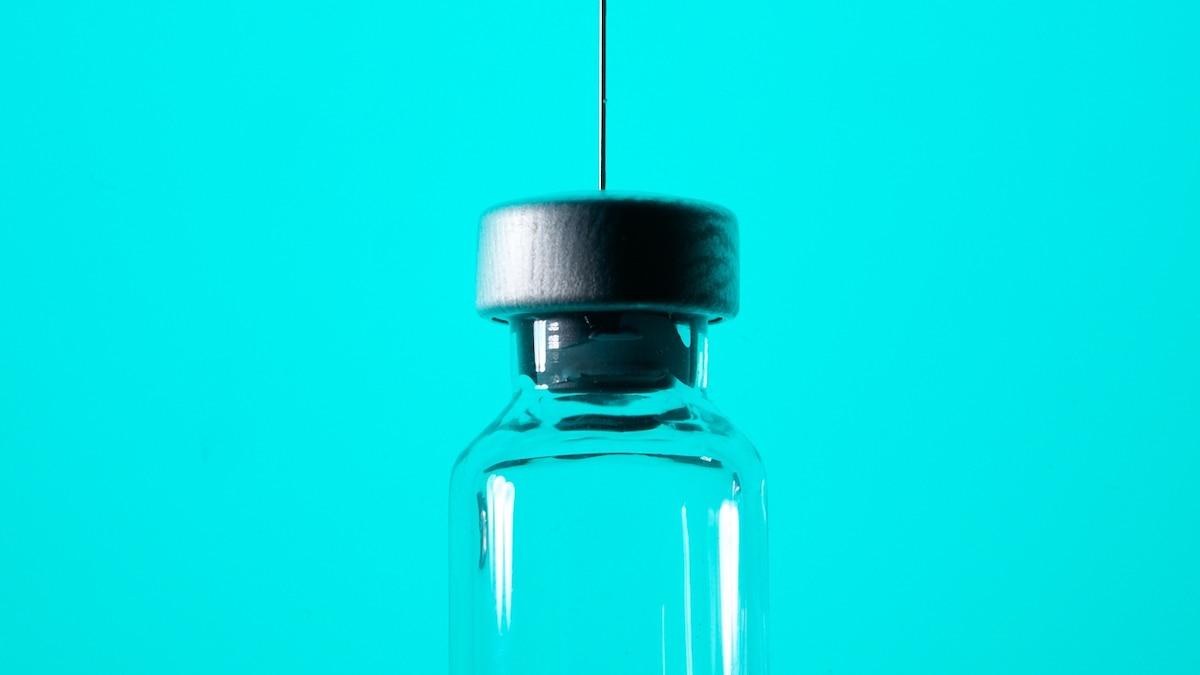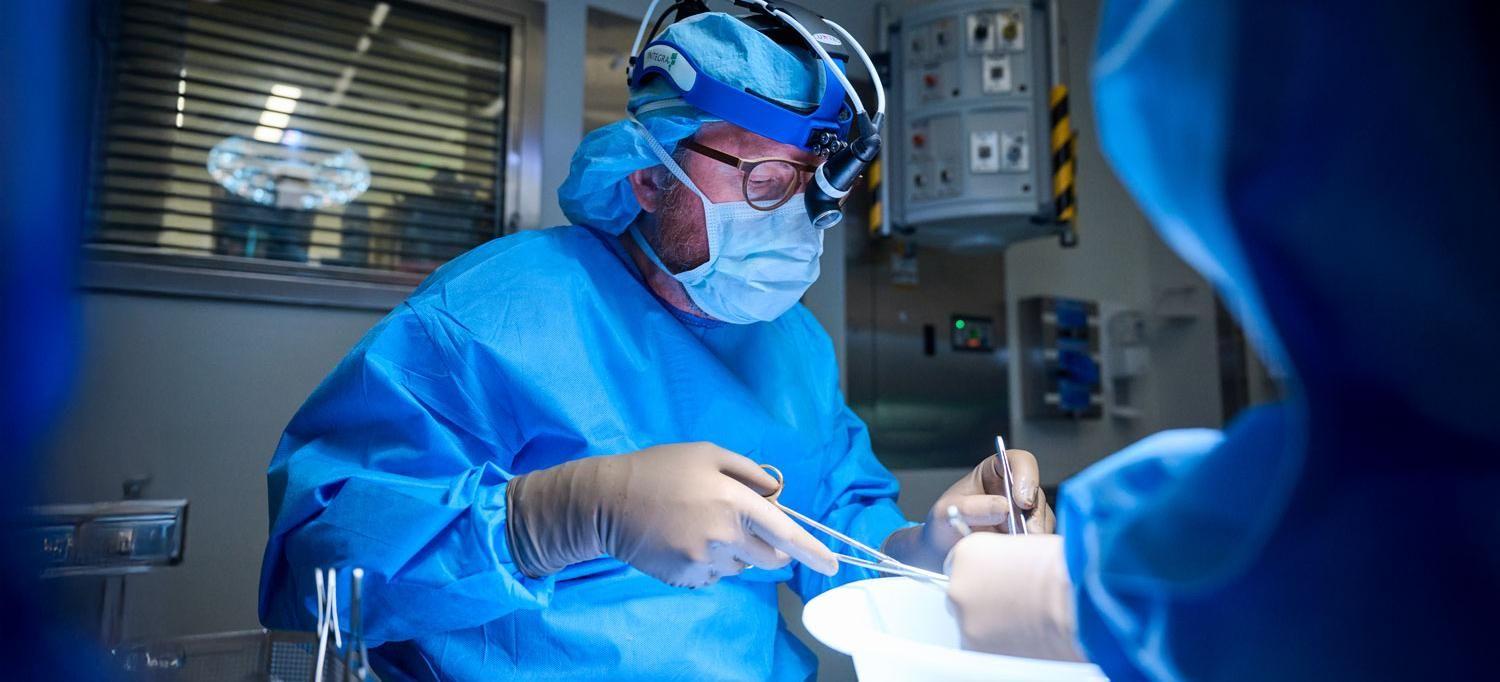An autoimmune disease destroys the body's ability to produce insulin.Some patients in experimental studies received.
A cure for a lot of diabetes
An autoimmune disorder destroys the body's ability to make insulin.
Amanda Smith went into the kitchen one night in 2015 to warm up a bottle for her four-month-old daughter, but the microwave didn't produce numbers.They were a blur.They were never blurred.A dark thought suddenly occurred to me: diabetes.She had a mother and Smith was a nurse.She knew the signs.he has blood sugar, suck his blood sugar stuff and distort the incoming light.
Smith woke her husband up and they rushed to a hospital in Ontario, where a test showed her blood sugar was stable, more than six times higher than healthy.Then the doctor injected her with insulin and broke her levels. "It was difficult from the beginning."Smith.He was diagnosed with type 1 diabetes, a chronic, incurable disease, and it made him angry.It made him sad.His blood count regularly drops from insulin withdrawal, which makes him depressed.She fails with her husband.He fails with his three children.make
But in October, Smith hasn't had to take extra insulin in more than two years.He feels like freedom, he says.
Smith is part of the first wave of patients who receive what doctors and scientists are careful to say, soon, one day, one day.Mr. Kevan Harold, physician, pediatrician, and type 1 diabetes researcher at the Yale School of Medicine."But that's the direction we're headed."
Before treatment, Smith, now 36, who was imprisoned in his body, arrested himself, in the minute of managing his blood sugar."I drank milk around it. I had to put my baby in the park so I could eat in my pocket if my blood sugar was low."But now, "I feel sometimes," as she says, although the treatment continues, "These are the best years."
Smith's treatment is still in clinical trials, the results from June in England of England.The pharmaceutical company is conducting tests, Gertmet drugs, it is expected to release the treatment later and wait for the approval of ten years with 40,000 leaders in Europe.The treatment, called VX-880, will begin to be prescribed in a set of smothetics in which Smith cannot deliver safe sugar levels and insulin treatments are not attempted.It is not developed as a general treatment, because you need drugs to reduce it, the sugar business cannot do it.
But what this moment represents, scientists say, is profound.For more than a century, doctors have treated disease by restoring a chemical it can no longer produce: insulin.Although the discovery of insulin turned the deadly disease into a curable disease, type 1 diabetes remains a disease that requires ongoing treatment.Scientists are now learning to restore the source of insulin secretion to restore the missing parts.If VX-880 continues to work, researchers say the science behind it could treat more than just diabetes.
('Type 1.5' Diabetes is real - and undiagnosed)
For most of human history, type 1 diabetes was incurable
In ancient times, doctors said that infected people were drawn to urinate, and ants had a stick.The children were wasted in looks and appearance, their bodies were fatter and more muscular, and they lived longer.These people urinate in liquid, as the doctors predicted.Cappadocia handled the treaty.The word "siphontal" means that, apparently, the feeding of food and drink followed all people.
For reasons that are not yet understood, the immune system of type 1 diabetes begins to spontaneously destroy the beta cells that live in the main cells, the beta cells that make the pancreas.
When a person with a fully functioning pancreas eats a banana, the sugar from the banana builds up in her blood and insulin allows the sugar to enter her cells.It is the main way humans produce energy from food.Without enough healthy beta cells, the pancreas secretes little or no insulin and sugar builds up in the blood, becoming toxic.High blood sugar can damage nerves, blood vessels, tissues and organs.At the same time, the cells die.hungerIn search of fuel, the body turns to fat and when it burns, acids also accumulate in the blood.
Globally, one in nine adults has diabetes, but the majority have type 2 diabetes. People with type 2 diabetes normally produce insulin;but their cells don't respond well to hormones and can't absorb sugar, which accumulates.The underlying causes of type 2 diabetes are well understood (they involve lifestyle factors, mainly like eating unhealthy foods or getting too little exercise), but for type 1 diabetes, they remain a mystery.What researchers do know is that type 1 diabetes is more common among young people in rich countries, where many patients have enough money, access and education to minimize the disease's mortality rate.For example, a child diagnosed at age 10 in the United States will likely live to be 67 years old. But in Afghanistan, for example, that child will likely die at age 24.
(Diabetes changes faster than expected)
For centuries, the main treatment for type 1 diabetes has been to deprive the body of all the nutrients it should be absorbing - essentially starvation.It was humanity's best treatment until 1921, when a young Canadian surgeon, Frederick Banting, and a medical student, Charles Best, removed a dog's pancreas.sucked into a needle and shot them back into a dog suffering from diabetes without a pancreas.The dog's blood sugar level decreased within two hours.
The first time anyone was banned, and the following year, a 13-year-old boy died in a demonstration in a Toronto church installed by Bolrine.The pressure drops within hours.Suddenly, a muscle disease is caught.The discovery saved the lens for millions of lives.In the century, doctors sometimes like to say that with Insuapeticicicicicicicicicicicicicicicices, Type 1 Diabetes can live a "normal life".But their "normal" interpretation often puts the burden of fulfilling the patient."You can be healthy to endure.
All the challenges of living with type 1 diabetes in a post-insulin world can be summed up in these two letters: IF.If a diabetic can get the disease under control, her life can often seem, on the surface, normal.But internally it is a war.Every day she needs to do beta cell work and regularly monitor her blood sugar using test strips or a glucose monitor.Work involves guesswork.What did she eat and what will she eat?Does she exercise?Is she stressed?Dehydration?
Most type 1 diabetics can manage the disease.Chris Binder, for example, played Division I football at the University of Maine in the 1990s. He was a kicker.From the stands, no one could tell that he had been diagnosed at age two, although at halftime the staff always made sure he had a large sandwich in case his blood sugar dropped.They'd say, "Is Binder's grinder here?"Binder is 50 years old.today he lives in New Orleans and works at a technology company that consults with college and professional sports teams to improve their performance.There's not much it can't do;the disease does not dictate your life."I think I really lived with diabetes," he says, "and I didn't live for diabetes."
But if diabetes can't control the disease, her life will look different.While tying her shoes before work one morning, Jennifer Coleman, a 60-year-old accountant in Alberta, hit her head through a glass case as a low blood sugar-induced seizure went through her.Coleman doesn't get the warning signs that most diabetics get when their sugars go bad—scratchy knees, sweaty hands, a gloomy mood.And the sense of doom - so often she was blinded by the lows."Everything takes a lot of planning. This is the biggest thing," he says."And you have to be prepared for bad things."
Heather McLeod, a 59-year-old family doctor in Vancouver, was diagnosed when she was six years old.Despite her medical education, her blood sugar fluctuated frequently."If I go for a walk, I should take three juice boxes with me and I should carry insulin with me. Oh, do I have enough test strips? Do I have my sensors?"Like Coleman, McLeod doesn't get the usual warnings."It's just living in fear," she said."I feel like Cinderella, I don't know when my coach will be a pumpkin."
It's the same for Mary Anna Pokerznik."People don't understand the emotional toll when you work hard and you keep failing," she says.Pokerznik, diagnosed at 11, 55, is a retired public teacher.For years, Pokerznik was the only rider in her son's dance class.But often pokerznik's blood sugar is too low to drive and his son will bawl his eyes.Thinking "-Better insulin, better insulin pump, better monitor, better algorithsmsin, that's the answer," is not true."
Type 1 diabetes is on the spectrum.Binder may represent far on one side, Coleman, mcleod and pokerznik on the other.But the point is, if someone gets it wrong, it can be fatal, because the most advanced medical devices still cannot match the precision of the tiny biological machine built into the human pancreas: the beta cell.That's why scientists have been trying for decades to find a way to change it.
(Eating too much of this favorite food can increase your risk of diabetes.)
Decades of achievements
The beginnings of the discovery of Vertex date back to one night in 1991, when Doug Melton, a 38-year-old professor of developmental biology at Harvard University, was studying the eggs of African frogs in the basement of the Biological Laboratories.Melton looked for genes that tell the early stem cells of a fertilized egg to transform into specialized cells.Then his wife Gail called him: Sam, their six-month-old son, was vomiting.Melton ran out of the lab.In the emergency room at Boston Children's Hospital, he and Gail learned their son had type 1 diabetes.
After the test, Melton gathered everyone in the lab - all 25 to 30 colleagues - and told them that he had changed from their research on frogs.Harvard agreed to build Melson a new outfit to do a new job: the treatment of type 1 diabetes.
He wasn't starting over.His work with frog embryo cells showed the way forward.These early stem cells are like biological blank slates: Given the right stimuli, they can turn into any cell in the body.Melton just had to come up with the cues to turn human stem cells into functioning beta cells.He was already, he says, "a painter, but now I was told what had to be the subject of the painting."
Melton told me recently that he didn't know how difficult the investigation would turn out to be, and for that he's grateful.Had he known, he might have stopped.
Between 1990 and 1999, Melton covered this three- to four-year gap, then extended it again.Melton was not the only cell therapy researcher, but each of them worked in isolation.At the time, the scientific community was more concerned with trying to understand the mechanism by which insulin was secreted than with how to make the secreting cells.
Then it's time to make your work in a new direction.If in a medium of games in the same games in a cedasy protocol, and save Straroid hit.(Sterids Save to recover patients in diseases
Each patient soon began producing enough of their own insulin that they no longer needed injections, and they continued to produce insulin during follow-up more than a year later.
Pokerznik was the second patient of Shapiro's trial.choice."
After 2000. When the New England Journal of Medicine published the results, switchboard operators at the University of Alberta Hospital were shocked. Patients from all over the world were on Shapiro's transplant list, and he would soon receive a $35 million grant to conduct further research.
While the Shapiro protocol is available to patients who cannot control their diabetes in other ways, it is not widely prescribed.Corpse islet cells require immunosuppressive drugs, which put them at risk of new infections and new cancers.Islet cells also come from a finite source: dead people.Patients usually need two or three donor cells, and this is not a one-off.Sometimes the cells die, requiring replenishment.Pokerznik, for example, received supplemental insulin for several weeks after his first transplant in 1999.Then, in 2003, he received insulin again.In 2014: Off again.In 2018: ON.He has been taking insulin since 2019.
Still, Lori Sassell, director of research at the University of Colorado Barbara Davis Diabetes Center, said Shapiro's study was a turning point: "This was a proof of concept."Scientists saw that islet cells were surviving in patients' bodies and began to think that perhaps Melton and his group were on to something after all.If cells taken from cadavers can restore insulin production in patients, why can't they be grown in the lab? "People who weren't interested in cell therapy before are now interested," Shapiro says.
Now that Melton and other researchers have passed, the isolation work, scientists have not yet focused on their work.And collect money later.A year after Shapiro's trip and its results, the Celortium Institute of Health was created, which began grants in Europe.As the power of research quickly, the destruction of another, Melton also began to grow plants.
The 'word effect' of distome cells
Within every trillion cells in the human body there are about 20,000 genes, of which only half a quarter are expressed.Cells read genes to learn how to do what they need to do, and Melton and his team were unraveling which genes a stem cell must read to learn how to secrete insulin.it took us so long.
One night in 2012, Melton's colleagues were gathered in the laboratory around a piece of plastic that resembled a giant egg carton.It contained 96 small trays, and each tray contained a pool of experimental beta cells derived from stem cells.They mixed a solution with an antibody that turned blue in the presence of insulin and simply added sugar.Nobody expected anything to happen.Minutes passed.A single replaced tray turned blue.The young scientists ran into the corridor and informed Melton;he thought it worked in the end too.Then he said, "Do it again."
They did, over.And in the year since then, the biotechnology company's ear melon for the scale of production that was planned, under $ 980.
Before the trial, 12 of the patients had struggled to regulate their blood sugar using extra insulin.For 9 ninety days, their blood subs were adjusted.Two of the patients required insulin.Ten is completely defeated..
Vertex's findings, published in July in the new journal Primary Medicine, along with the scientific community.
Like Shapiro's islet cells, patients in the Vertex trials need immediate treatment.alien.
Now labs, including Vertex and Sana, are working separately on combining the two technologies into a single solution: lab-grown cells that don't require immunosuppression and reliably produce insulin.Some scientists say that such therapy will cure type 1 diabetes.Marilyn Pragnell, vice president of research and science at the American Diabetes Association, says the twin breakthroughs mark a new era in medicine."I think it's literally transformational," he says."Really change. It's a big deal."
A new era in medicine is approaching
In the dark ages, Porul, before discovering the trial at Port, the first patient in a trial of VertEx to receive the full dose of the treatment, would soon die of diabetes.Now he doesn't even need insulin therapy."I see it as such a blessing," he said."Datma," he said.
Many questions remain.Will Sana's gene-edited islet cells continue to evade the body's immune system?Will Melton's stem cells survive longer in humans than Shapiro's cadaver islets?Time is of the essence.Meanwhile, advances in the parallel fields of stem cell therapy and gene editing are making possible breakthroughs in the treatment of other diseases.
For example, in a medical practice that started in 2018, a surgeon in many eyes and the ear has popped out of 14 of the mamas so bad that the 14 of the mamas.So many had no sight and their eyes were very painful.In the follow-up Ita 18 months later, the surgeon found that the surgery has fixed firmly, improving their vision and reducing the pain.Nature Communications published the findings in March.And in May, the New England book of medicine published the results of scientists, and the President of children, and it appeared that the disease of the person to be treated.
Vertex is currently leading efforts to treat type 1 diabetes. The company is in the final stages of clinical trials for the cell therapy and expects results next year, after which it will ship food and drugs to control drugs.Vertex hopes to bring the treatment to market at the end of the decade.
If the medical market can be limited to the most difficult cases, over time, it can increase.The Centers for Disease Control and Prevention has not monitored the growth of type 1 diabetes for a long time, but its latest statistics put the number of Americans at 304,000. The model suggests that the number will increase by 65 percent in 2060.
Smith still serves up such ads on Facebook and Instagram telling him that eating cinnamon will, say, cure his type 1 diabetes. He never thought there was an actual cure in his life.To be clear, he says, the VX-880 isn't, not yet."We don't know how long it will last," he said, but he feels better now on the immunosuppressant than when his blood sugar fluctuated, a sentiment shared by many of Shapiro's patients.Smith takes three tablets three times a day, which are small pills."Nothing," he said.
The medical community should not recommend cell therapy such as VX-880 when they hit the market due to concerns that they are interested in patients who say they are interested, even if they have misrepresented them.Blood sugar health with pump and glucose monitor."But whoever has been alive because of this disease all his life, he can't," he said, "this is the need," he said, "he said," it needs to be touched."








